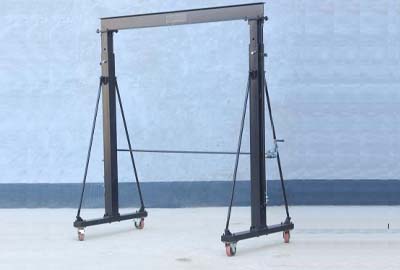Effective Use of Circular Lifting Magnets for Efficient Material Handling Solutions
Circular Lifting Magnets A Comprehensive Overview
In the world of material handling and industrial applications, the significance of effective lifting solutions cannot be overstated. One of the most reliable tools for lifting heavy ferromagnetic materials is the circular lifting magnet. These specialized devices have revolutionized operations in various sectors, including manufacturing, recycling, and logistics, providing efficiency and enhanced safety.
What are Circular Lifting Magnets?
Circular lifting magnets are electromagnetic devices designed specifically to lift and move ferromagnetic materials such as steel plates, pipes, and scrap metal. They work on the principle of electromagnetism, where an electric current is passed through coiled wire, generating a magnetic field. This magnetic field adheres to ferromagnetic objects, enabling operators to lift and maneuver heavy loads with relative ease.
These magnets come in various sizes and strengths to accommodate different lifting requirements, from small workshop operations to large-scale industrial applications. The circular design not only allows for uniform distribution of the magnetic force but also makes it easier to fit into tight spaces where standard rectangular magnets may not be ideal.
How Do Circular Lifting Magnets Work?
The operation of circular lifting magnets is straightforward yet highly effective. When the magnet is activated by connecting it to an electrical power source, the coil inside generates a powerful magnetic field. This field magnetizes the surface of the ferromagnetic object it comes in contact with, creating a strong attachment.
Upon completing the lift, to release the material, the electric current is cut off, deactivating the magnetic field. This process is crucial for safety and efficiency, ensuring that loads can be managed without manual intervention. Many modern lifting magnets are designed with safety features such as automatic cut-off systems, which prevent accidental releases and enhance operational safety.
Applications of Circular Lifting Magnets
The versatility of circular lifting magnets makes them suitable for a wide array of applications
1. Manufacturing and Fabrication In manufacturing settings, circular lifting magnets are essential for handling heavy metal components. They facilitate the easy transportation of sheets, rods, and structural elements throughout the production line, ensuring that workflows remain uninterrupted.
2. Scrap Metal Recycling The recycling industry heavily relies on these magnets to lift and sort ferrous metals during recovery processes. Their ability to quickly and safely move scraps contributes to greater efficiency in recycling operations.
circular lifting magnets

4. Shipbuilding and Maritime Applications In shipyards, where heavy loads are common, these lifting tools assist in transferring large metal pieces, optimizing the building process of vessels.
5. Warehousing and Logistics In warehouses, where metal goods need to be moved frequently, circular lifting magnets streamline sorting and storage processes, allowing for quick and safe operations.
Advantages of Circular Lifting Magnets
The use of circular lifting magnets comes with several advantages
- Efficiency They allow for swift handling of loads, decreasing downtime associated with manual lifting.
- Safety By minimizing human contact with heavy materials, these magnets reduce the risk of injury in the workplace.
- Versatility Their design makes them adaptable to various environments, whether in a factory or on a construction site.
- Cost-Efficiency By enhancing operational efficiency, businesses can significantly reduce labor costs and improve productivity.
Conclusion
Circular lifting magnets represent a pivotal advancement in material handling technology. Their ability to safely and effectively lift heavy ferromagnetic materials has made them indispensable in numerous industries. As technology continues to evolve, innovations in circular lifting magnet design and functionality will likely emerge, further enhancing their efficiency and broadening their application. Embracing these tools not only improves operational workflows but also contributes to creating safer work environments, fostering a culture of safety and efficiency in industrial operations.
-
Permanent Magnetic LiftersNewsNov.01,2024
-
Operations with an Adjustable CraneNewsNov.01,2024
-
Machine Moving SkatesNewsNov.01,2024
-
Industrial Lifting MagnetsNewsNov.01,2024
-
Effective Machinery MovingNewsNov.01,2024
-
Adjustable Gantry CraneNewsNov.01,2024
-
Unlock the Power of Lifting with Permanent Magnetic LiftersNewsOct.11,2024
